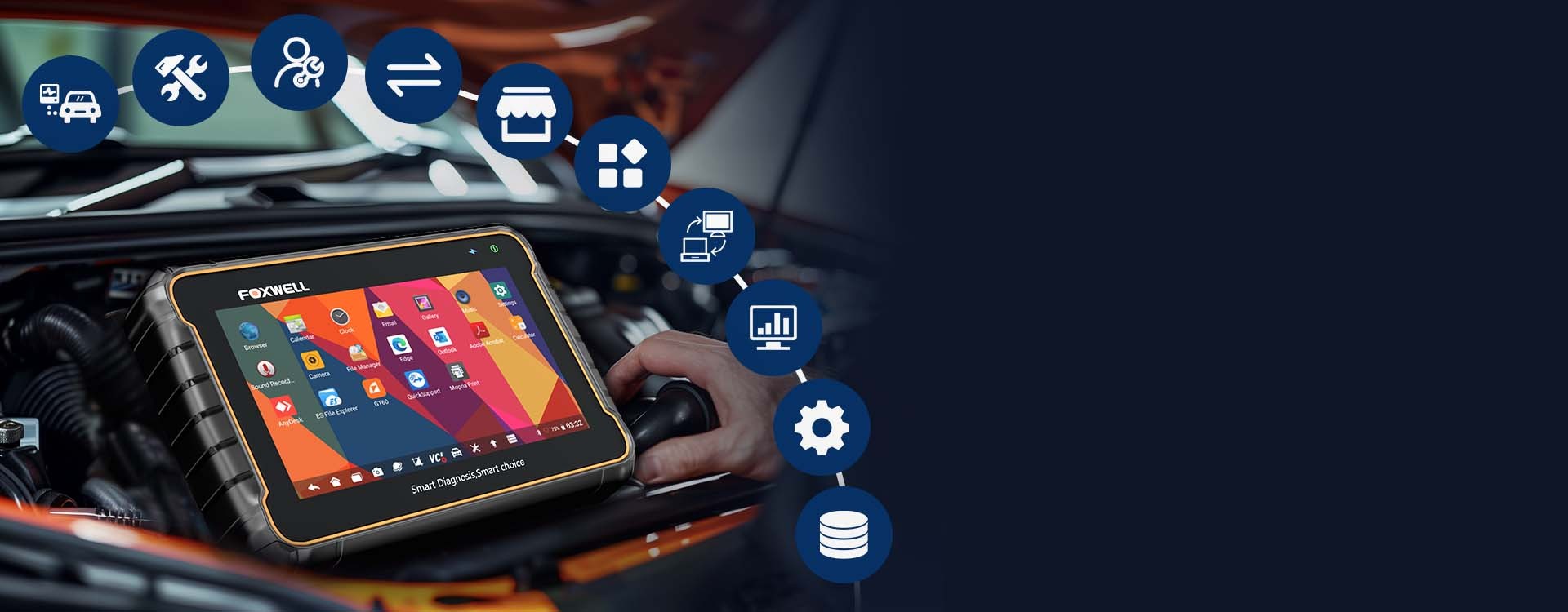While an OBD2 scanner isn’t going to give you a straightforward “brake light out” message, it can be incredibly helpful in diagnosing why your brake lights might not be working. As an expert at techcarusa.com, I’m here to explain how these scanners can indirectly point you towards brake light issues by identifying problems within the brake light circuit, switch, and other related electrical components.
Think of your OBD2 scanner as a detective for your car’s health. It reads trouble codes from your vehicle’s computer, helping to pinpoint underlying problems that could be affecting various systems, including, you guessed it, your brake lights.
The Vital Role of Brake Lights: More Than Just Illumination
Brake lights are a cornerstone of automotive safety. Their primary function is simple yet critical: to alert drivers behind you that you are decelerating or coming to a complete stop. This seemingly basic signal is paramount in preventing rear-end collisions, especially in today’s congested roads and during sudden stops.
Imagine navigating through heavy traffic or needing to brake sharply. Your brake lights are the immediate visual cue for drivers behind you to react accordingly. This early warning system is crucial for maintaining safe distances and avoiding accidents.
Beyond collision prevention, brake lights significantly enhance your vehicle’s visibility, particularly when driving conditions are less than ideal. In low-light situations like nighttime, fog, or heavy rain, the bright red glow of your brake lights makes your car easily noticeable. This enhanced visibility is a proactive safety measure, ensuring other drivers are aware of your presence and actions, thereby minimizing the risk of accidents.
Moreover, functioning brake lights are not just about safety; they are a legal mandate in virtually every region. Driving with non-operational brake lights can lead to fines and, more importantly, substantially increases your risk of being involved in an accident. Law enforcement agencies routinely check for brake light functionality during vehicle inspections. Ensuring your brake lights are in perfect working order is therefore both a responsible safety practice and a legal obligation.
Unlocking Diagnostics: How an OBD2 Scanner Steps In
An OBD2 scanner, especially advanced models like the Foxwell NT809BT, serves as an indispensable tool for diagnosing a wide spectrum of vehicle issues, including those affecting your brake lights. These scanners are designed for comprehensive diagnostics, capable of reading and clearing trouble codes, and providing real-time data that can be instrumental in identifying problems within your braking system.
Pinpointing Electrical Fault Codes: The Indirect Brake Light Clue
The Foxwell NT809BT excels at detecting electrical malfunctions that can impact your brake lights. It meticulously scans your vehicle’s intricate systems, retrieving diagnostic trouble codes (DTCs) specifically related to the brake light circuit.
These codes can act as red flags, indicating common problems such as burnt-out bulbs, a malfunctioning brake light switch, or even a blown fuse. The scanner’s ability to swiftly pinpoint these electrical anomalies allows for prompt repairs, ensuring your brake lights are consistently functional and reliable. While the code won’t explicitly say “brake light bulb out,” it will narrow down the potential electrical issues that are preventing them from working.
Comprehensive Brake System Analysis: Beyond the Bulb
Modern vehicles are sophisticated machines equipped with a network of sensors that constantly monitor critical systems, including the braking system and its components like brake lights. The Foxwell NT809BT has the capability to interpret outputs from these sensors, enabling a deeper diagnosis of malfunctions that might be preventing your brake lights from operating correctly.
For instance, it can detect anomalies within the Anti-lock Braking System (ABS) or issues with the brake light switch itself – both of which can directly influence brake light functionality. This comprehensive diagnostic capability ensures that a broader range of potential problems is identified and can be effectively addressed, going beyond just checking the bulbs themselves.
Live Data and Advanced Diagnostics: Deep Dive Troubleshooting
The Foxwell NT809BT goes further by providing real-time data and advanced diagnostic features. These are invaluable for conducting in-depth troubleshooting of intermittent or elusive issues.
Imagine being able to monitor the performance of the brake light circuit and related components while your vehicle is running. This live data stream offers a clear, dynamic picture of what might be causing your brake lights to fail, especially when the problem isn’t consistently present. This real-time monitoring is particularly effective for diagnosing those frustrating intermittent problems that don’t always show up during a static check.
Common Brake Light Problems and Practical Solutions
Let’s explore some typical brake light issues and how you can tackle them:
1. Burnt-Out Bulbs: The Most Frequent Culprit
If your brake lights fail to illuminate when you press the brake pedal, the most common suspect is a burnt-out bulb. Here’s a straightforward guide to checking and replacing them:
- Visual Inspection: Ask someone to stand behind your vehicle as you press the brake pedal. Alternatively, park your car facing a wall and observe the reflection of your brake lights. If one or both lights are not turning on, bulb replacement is likely needed.
- Bulb Replacement: Consult your vehicle’s owner’s manual to identify the correct bulb type. Typically, brake light bulbs are accessible by opening the trunk and removing the light assembly cover from inside. Remove the old bulb, insert the new one, and ensure it’s securely fitted.
- Functionality Test: Press the brake pedal again to confirm that the newly installed bulb(s) are working correctly.
2. Faulty Brake Light Switch: When the Signal Fails
A malfunctioning brake light switch can lead to your brake lights either staying on constantly or, more commonly, not turning on at all. Here’s how to diagnose and potentially fix this:
- Switch Location: The brake light switch is usually positioned near the top of the brake pedal arm, under the dashboard.
- Continuity Test: Disconnect the switch. Use a multimeter to test for continuity across the switch terminals when the plunger is pressed (simulating pedal press). If there’s no continuity when pressed, the switch is likely faulty.
- Switch Replacement: Remove the old switch by unscrewing it from its mounting bracket and disconnecting the wiring harness. Install the new switch, reversing the removal process. Ensure it’s correctly adjusted so it activates when the brake pedal is pressed.
3. Blown Fuses: Electrical Circuit Interruption
Blown fuses are another frequent cause of brake light failure. Here’s how to check and replace them:
- Fuse Box Location: Refer to your vehicle’s manual to locate the fuse box(es). They are commonly found under the dashboard, in the engine compartment, or sometimes in the side of the dashboard accessible when the door is open.
- Brake Light Fuse Identification: Your manual will specify which fuse is designated for the brake lights (often labeled as “STOP” or “BRAKE”).
- Fuse Inspection: Remove the fuse and visually inspect the thin wire inside. If the wire is broken or melted, the fuse is blown.
- Fuse Replacement: Replace the blown fuse with a new fuse of the exact same amperage rating. Replacement fuses can be purchased at any auto parts store. After replacing, test your brake lights to ensure they are now working.
Step-by-Step Guide: Diagnosing Brake Lights with an OBD2 Scanner
Here’s how to use your OBD2 scanner to investigate potential brake light issues:
- Scanner Connection: Locate the OBD2 diagnostic port in your vehicle (usually under the dashboard on the driver’s side). Plug your OBD2 scanner securely into this port.
- Code Reading: Turn on your vehicle’s ignition (no need to start the engine). Follow your scanner’s on-screen prompts to initiate a scan and read stored trouble codes. Look for codes related to the brake light circuit, ABS, or any electrical system faults.
- Code Interpretation: Use the scanner’s built-in code library or a reliable online OBD2 code database to understand the meaning of each retrieved code. Codes indicating electrical circuit problems, brake switch issues, or general brake system faults are relevant to brake light diagnosis.
- Component Inspection and Repair: Based on the interpreted codes, proceed with physical inspections. Check the bulbs first, then inspect wiring for damage, test the brake light switch, and check fuses. Replace burnt-out bulbs, repair wiring issues, or replace a faulty brake light switch or blown fuse as needed. After each repair, clear the codes with your OBD2 scanner and re-test your brake lights.
In Conclusion: OBD2 Scanners as a Diagnostic Ally
An OBD2 scanner, like the Foxwell NT809BT, is an invaluable asset for diagnosing a range of vehicle problems, including those that might cause your brake lights to fail. While it may not explicitly announce “brake light out,” it acts as a powerful diagnostic tool, providing crucial clues to identify the root cause of brake light malfunctions.
Regular vehicle maintenance combined with timely diagnostics using an OBD2 scanner ensures that your brake lights, and indeed your entire braking system, function optimally. This proactive approach is key to maintaining your safety and the safety of others on the road.
FAQs
Will an OBD2 Scanner Read Brake Codes Specifically?
Yes, an OBD2 scanner is capable of reading brake-related codes, including those associated with the brake light circuit, the Anti-lock Braking System (ABS), and related electrical faults that can affect brake light operation.
What’s the Quickest Way to Check If My Brake Lights Are Out?
The quickest method is to press the brake pedal while parked facing a reflective surface (like a store window at night) and check the reflection. Alternatively, ask someone to stand behind your vehicle and confirm if the brake lights illuminate when you press the pedal.
Which OBD2 Scanner Offers the Most Comprehensive Diagnostic Information for My Car?
The Foxwell NT809BT is known for providing comprehensive diagnostics across all major vehicle systems, offering in-depth insights for troubleshooting and maintenance.

